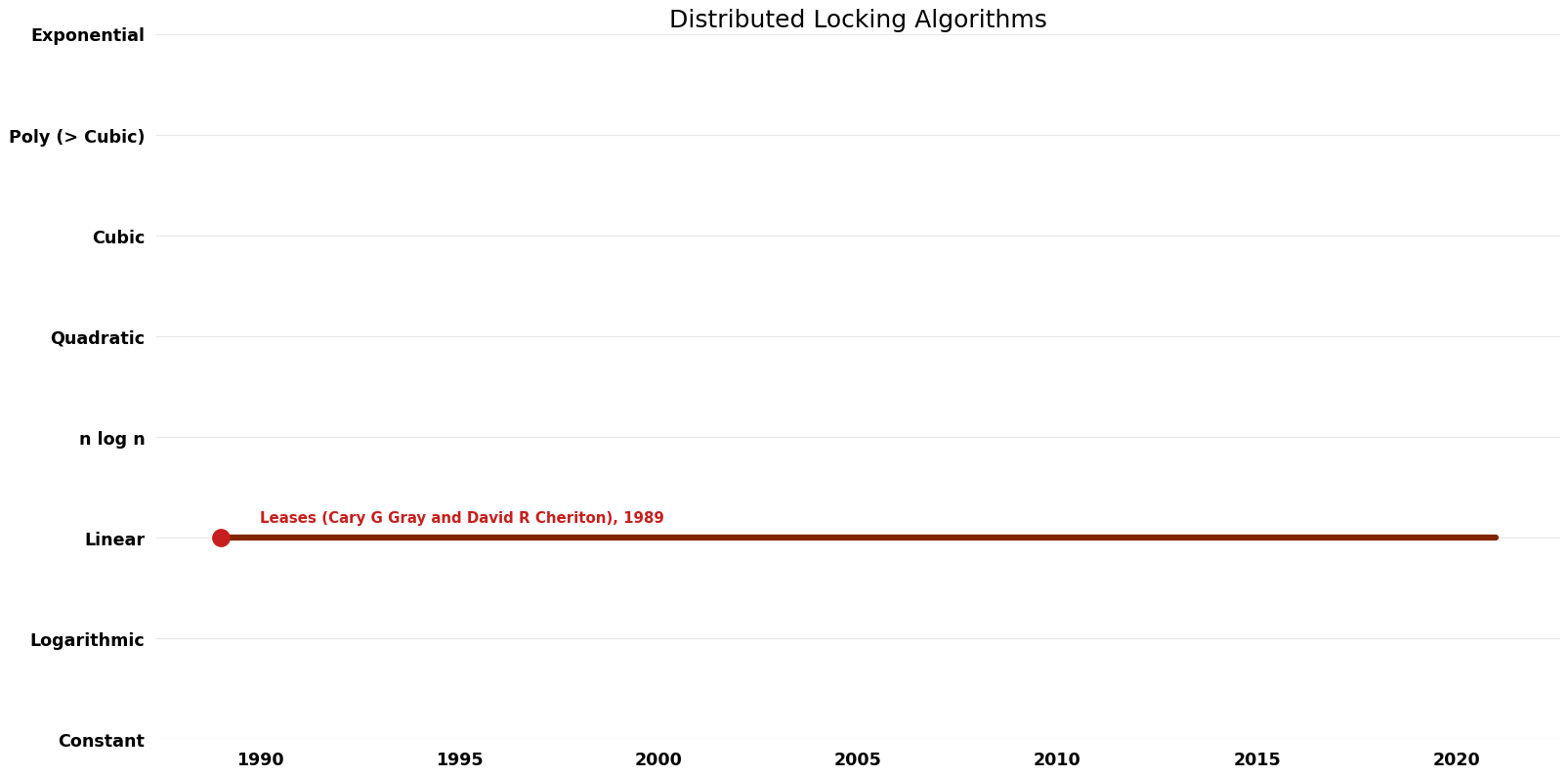Distributed Locking Algorithms (Distributed Locking Algorithms)
Revision as of 10:25, 15 February 2023 by Admin (talk | contribs) (Created page with "{{DISPLAYTITLE:Distributed Locking Algorithms (Distributed Locking Algorithms)}} == Description == The purpose of a lock is to ensure that among several nodes that might try to do the same piece of work, only one actually does it (at least only one at a time). That work might be to write some data to a shared storage system, to perform some computation, to call some external API, or suchlike. At a high level, there are two reasons why you might want a lock in a distrib...")
Description
The purpose of a lock is to ensure that among several nodes that might try to do the same piece of work, only one actually does it (at least only one at a time). That work might be to write some data to a shared storage system, to perform some computation, to call some external API, or suchlike. At a high level, there are two reasons why you might want a lock in a distributed application: for efficiency or for correctness.
Parameters
No parameters found.
Table of Algorithms
| Name | Year | Time | Space | Approximation Factor | Model | Reference |
|---|---|---|---|---|---|---|
| Leases (Cary G Gray and David R Cheriton) | 1989 | $O(n)$ | $O(f)$? | Exact | Deterministic | Time |
| Chubby (Mike Burrows) | 2006 | $O(n)$ | $O(f)$? | Exact | Deterministic | Time |
| Tushar Deepak Chandra and Sam Toueg | 1996 | $O(n)$ | Exact | Deterministic | Time |


